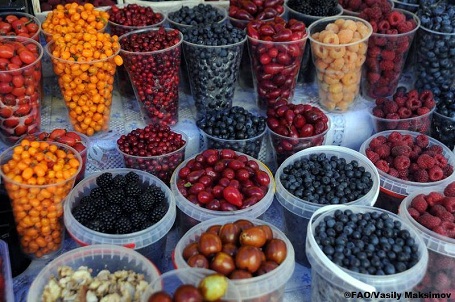Local, global players conduct agriculture census in Georgia

Results of the Agriculture Census, detailing the situation in Georgia's agriculture industry, have been released.
The Agriculture Census surveyed the country's agricultural sector and revealed the state of the industry as of October 1, 2004. The Census findings were released yesterday.
The Census was carried out by the National Statistics Office of Georgia, Geostat, together with the World Programme of Agricultural Censuses 2006-2015, recommended by the Food and Agriculture Organisation (FAO).The Census was based on FAO methodology. Statistics experts of FAO and the United States Department of Agriculture (USDA) were actively engaged in every stage of the Census process.
According to the Census results, as of October 1, 2014 there were 642,200 holdings in the country. Of this 640,000 were households and 2,200 were legal entities. About 30.9 percent of holders were women.
Among the regions, the largest number of holdings were in Imereti (19.6%), Kakheti (15.1%) and Samegrelo-Zemo Svaneti (13.3%).
Agricultural land and its use
The Agriculture Census revealed 787,000 hectares of agricultural land operated by holdings, of which 86.5 percent (681,100 ha) was operated by households and 13.5 percent (106,600 ha) – by legal entities.
- 40.1% of agricultural land operated by holdings were located in Kakheti,
- 15.5% - in Kvemo Kartli;
- 9.7% - in Samtskhe-Javakheti;
- 8.5 %-Samegrelo-Zemo Svaneti;
- 8.3 %-Imereti; and
- 18.0 % other regions;
According to the average area of operated agricultural land, the largest holdings were in:
- Kakheti (3.6 ha);
- Samtskhe-Javakheti (2.2 ha); and
- Kvemo Kartli (1.8 ha).
Arable land
According to the Census there were 377,400 ha of arable land operated by holdings in Georgia, of which 85.5 percent were operated by households and 14.5 percent by legal entities. Just under 45 percent of land under temporary crops was covered by maize, 18.6 percent by wheat, 9.2 percent by vegetables and 9.2 percent by barley.
Permanent crops
As of October 1, 2014, the total area of land under permanent crops operated by holdings reached 109,600 ha. An average area of land under permanent crops was 0.4 ha.
- 54.2% of land under permanent crops were orchards;
- 30.1% - vineyards;
- 6.7% - citrus plantations, and;
- 4.2% - tea plantations;
Livestock and Poultry
The Census revealed households owned and used 1,005,000 cattle. Additionally, households had:
- 989,300 sheep and goats;
- 213,100 pigs; and
- 8,216,000 poultry.
The highest number of cattle were found in Samegrelo-Zemo Svaneti (195,200 heads), Imereti (168,800 heads) and Kvemo Kartli (140,700 heads).
See the full report here.
 Tweet
Tweet  Share
Share